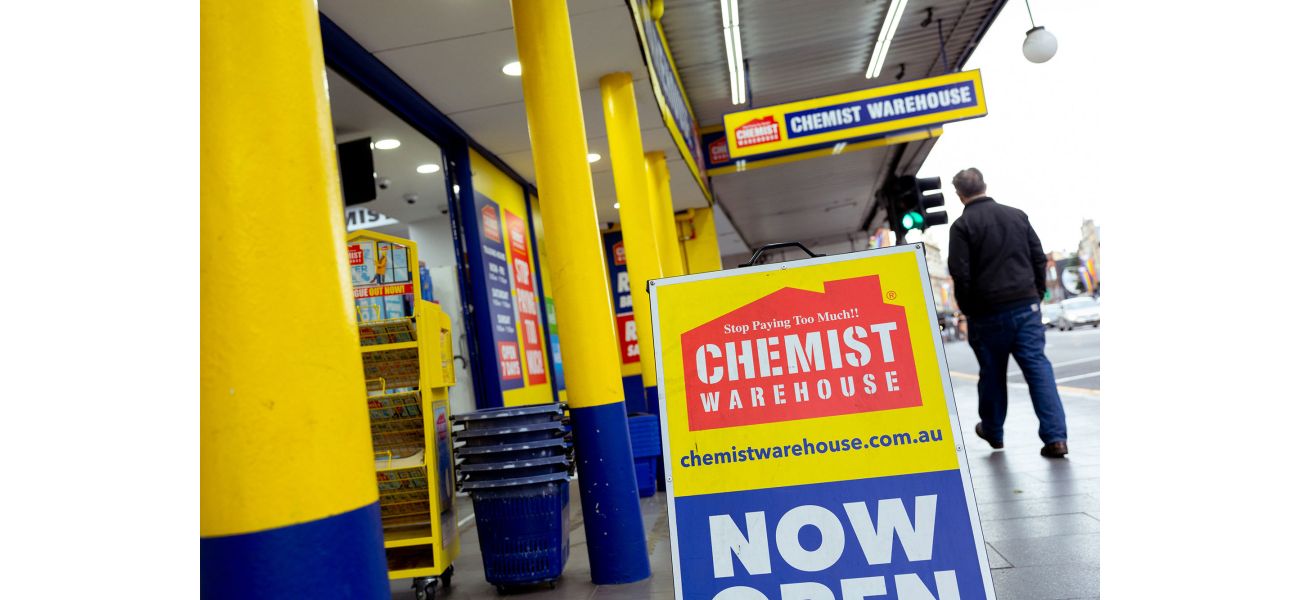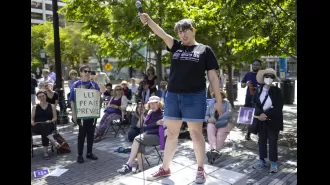A popular Australian retailer will soon have a new payment option for customers.
An expert predicts widespread use of this technology across the nation.
October 18th 2024.

Chemist Warehouse, one of Australia's largest retailers, recently announced their plans to introduce a new payment method that experts believe will become a common sight across the nation. This innovative method will allow customers to pay using a QR code, which will lead them to a link where they can directly pay using their bank details. The implementation of this new payment option is expected to take place in early 2025, and here's everything you need to know about it.
But why exactly is Chemist Warehouse making this change? According to experts, it's a strategic move to cut down on costs. With a significant decline in cash payments and the rise of card usage, businesses and customers alike are faced with fees associated with processing these transactions. While the government has proposed to ban debit card surcharges, QR codes provide businesses with an opportunity to take matters into their own hands.
Dr. My Nguyen, a finance expert from RMIT, explained that this shift towards QR code payments is a way for Chemist Warehouse to avoid the high costs incurred from card surcharges, which can add up to millions of dollars annually. This new method, known as "pay by bank," allows customers to make direct payments from their bank accounts by simply scanning a QR code, bypassing intermediaries such as Visa and Mastercard. By adopting this payment option, Chemist Warehouse hopes to reduce their annual expenditure of $15 million on card surcharges, which in turn, could lead to potential cost savings for their customers.
Furthermore, there are also security benefits to using QR code payments. The encrypted information within these codes can help reduce the risk of fraud, making it a safer option compared to credit and debit cards. However, like any new payment method, there are also some risks to consider. One of the main concerns is the reliance on internet connectivity, which could make QR codes less reliable in certain areas, especially in rural and remote regions where coverage may be patchy. Additionally, there is a potential risk of scanning fraudulent QR codes, leading to unauthorized transactions. Some consumers may also be hesitant to adopt this new payment method, especially if they are accustomed to using cards.
Despite these concerns, experts believe that QR code payments will become more widespread in the future. Chemist Warehouse is not the first business in Australia to adopt this method, and it's unlikely to be the last. According to Dr. Nguyen, this move aligns with global trends, where QR code payments are gaining popularity, particularly in countries like South-East Asia and India. In Australia, several major retailers have already implemented QR code payments, such as Muji, Vodafone, MJ Bale, and L'Occitane through ePay. Even major banks and supermarkets like Commonwealth Bank, National Australia Bank, Coles, and Woolworths have partnered with eftpos to support the rollout of a new eQR payment system. As more businesses recognize the benefits of QR code payments, we can expect to see wider adoption in the retail sector.
But why exactly is Chemist Warehouse making this change? According to experts, it's a strategic move to cut down on costs. With a significant decline in cash payments and the rise of card usage, businesses and customers alike are faced with fees associated with processing these transactions. While the government has proposed to ban debit card surcharges, QR codes provide businesses with an opportunity to take matters into their own hands.
Dr. My Nguyen, a finance expert from RMIT, explained that this shift towards QR code payments is a way for Chemist Warehouse to avoid the high costs incurred from card surcharges, which can add up to millions of dollars annually. This new method, known as "pay by bank," allows customers to make direct payments from their bank accounts by simply scanning a QR code, bypassing intermediaries such as Visa and Mastercard. By adopting this payment option, Chemist Warehouse hopes to reduce their annual expenditure of $15 million on card surcharges, which in turn, could lead to potential cost savings for their customers.
Furthermore, there are also security benefits to using QR code payments. The encrypted information within these codes can help reduce the risk of fraud, making it a safer option compared to credit and debit cards. However, like any new payment method, there are also some risks to consider. One of the main concerns is the reliance on internet connectivity, which could make QR codes less reliable in certain areas, especially in rural and remote regions where coverage may be patchy. Additionally, there is a potential risk of scanning fraudulent QR codes, leading to unauthorized transactions. Some consumers may also be hesitant to adopt this new payment method, especially if they are accustomed to using cards.
Despite these concerns, experts believe that QR code payments will become more widespread in the future. Chemist Warehouse is not the first business in Australia to adopt this method, and it's unlikely to be the last. According to Dr. Nguyen, this move aligns with global trends, where QR code payments are gaining popularity, particularly in countries like South-East Asia and India. In Australia, several major retailers have already implemented QR code payments, such as Muji, Vodafone, MJ Bale, and L'Occitane through ePay. Even major banks and supermarkets like Commonwealth Bank, National Australia Bank, Coles, and Woolworths have partnered with eftpos to support the rollout of a new eQR payment system. As more businesses recognize the benefits of QR code payments, we can expect to see wider adoption in the retail sector.
[This article has been trending online recently and has been generated with AI. Your feed is customized.]
[Generative AI is experimental.]
0
0
Submit Comment





